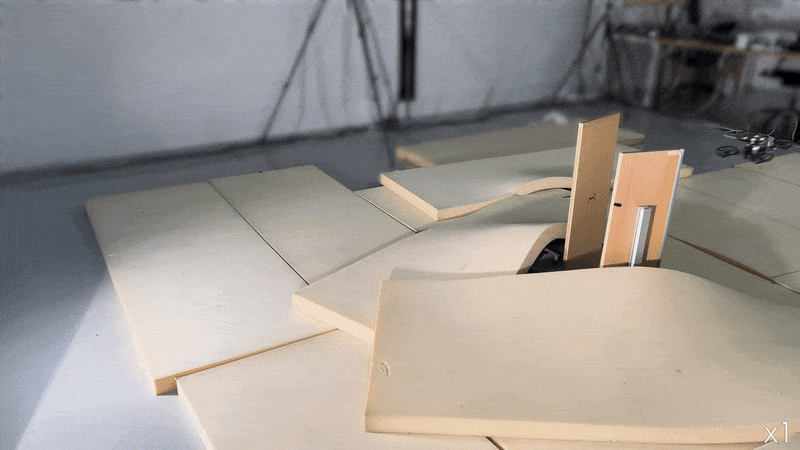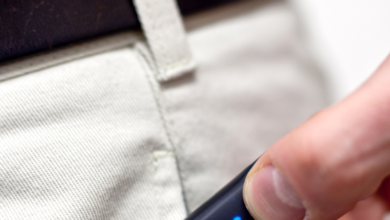Teen’s Pill-Tracking Device Attracts Interest From CVS Pharmacy

High school student Archishma Marrapu has made significant strides in the field of biomedical engineering. Her desire to use her technical skills to help others led her to develop low-cost innovations including an automated pill-tracking device that reminds patients to take their medications. Her Project Pill Tracker has caught the attention of major pharmaceutical companies including CVS, a large U.S. pharmacy chain.
Marrapu, a student at the Thomas Jefferson High School for Science and Technology, in Alexandria, Va., came up with the idea last summer after seeing her grandfather struggle to remember to take life-saving medications at specific times each day. She set out to create a device that would help him and millions of other people manage their medications effectively. Her 3D-printed prescription bottles are equipped with ultrasonic sensors, which keep track of the pills dispensed. The accompanying mobile app is programmed with a host of features including AI pattern analysis to detect skipped doses and misuse, as well as ChatGPT to provide information to users, such as ways to mitigate side effects.
By switching to Marrapu’s tracker from traditional prescription bottles, pharmacies could improve medication adherence, preventing intensified medical conditions and reducing the number of deaths—currently about 125,000 annually—due to forgetting to take a prescribed drug or misusing it, according to the World Health Organization.
Marrapu presented a poster on her invention at this year’s IEEE Integrated STEM Education Conference at Johns Hopkins University’s Applied Physics Laboratory, in Laurel, Md. She received the IEEE Technical Excellence Award.
“I want to be a changemaker in society and make a meaningful difference in people’s lives,” she says. “I firmly believe that by combining the power of health care and technology, we can address some of the most pressing challenges faced by individuals and communities worldwide.”
Disrupting the high-priced biomedical device market
Before creating her automated pill-tracking tool, Marrapu conducted market research. She found that similar devices were expensive, some charging a high monthly subscription plan of almost US $100—which puts them out of reach for many people.
“I set out to create something everyone could use regardless of socioeconomic background,” she says. “Health care has so many challenges that can be solved using simple, inexpensive technology. Why can’t we make biomedical devices that are both affordable and functional?”
Similar tools also don’t account for human errors such as forgetting to take a pill on time or ingesting too many.
After several iterations, Marrapu landed on a design similar to the prescription bottle pharmacies use today, only integrated with AI and other components that she built and programmed herself.
That includes LEDs that light up when it’s time to take a pill, as well a buzzer.
Her prescription bottles would be sold directly to pharmacies, she decided.
Marrapu developed an app to accompany the device. It allows the user to scan the bar code on the prescription bottle, which then autofills usage information about the prescription, including how many pills are to be taken and how often. When it’s time to take the medication, not only will the bottle light up and buzz; users also are notified on their phone.
“Everyone has a place in STEM, and the best way to lead is by example.”
By incorporating those three ways for the patient to be reminded, the device can alert those who are hearing-impaired or visually impaired as well.
To take the medication, the user pushes a button on the bottle lid; the prescribed pills are dispensed from an opening at the bottom. The lid is for design purposes only, to replicate the look and feel of ordinary prescription bottles.
The number of pills taken and the time of dosage is then recorded on the app. If the medication is not dispensed at the scheduled time after repeat reminders, the app automatically notifies the designated medical professional or caretaker.
The app also lists certain foods the patient should avoid, depending on the medication. Grapefruit, kale, cured meats, and other foods can affect the way some medicines work in the body.
Another app feature lets users give the reason why they’ve stopped taking a particular medication, such as side effects or financial issues. The app can provide recommendations such as ways to remedy the side effects, or it could suggest a generic alternative. It also notifies the medical professional or caretaker.
The pill-tracking device has a pattern-analysis algorithm that aims to help prevent prescription drug misuse. The algorithm tracks how many pills were dispensed “on demand” by the user. It can be done when, for example, the patient drops a pill on the floor and needs to dispense another to replace it. The pattern analysis identifies when someone is taking more medication than the doctor prescribed and notifies the doctor or a caretaker.
Getting in Front of the Customer
Marrapu first pitched her device to CVS executives in February. She also visited pharmacies in her area to interview pharmacists and customers.
“This helped the evolution of my product,” Marrapu says. “There was feedback, for example, from those with arthritis, or elderly people who had a difficult time pressing the button. Meeting with pharmacists, I got the idea to incorporate touch ID and voice recognition in the next iteration to make it simpler to dispense medication.”
Executives at CVS’ Digital Innovation Lab said they were impressed by Marrapu’s device. Together they are partnering on next steps to ensure the next version is more convenient and inclusive.
Some of Marrapu’s longer-term plans are to launch a startup to bring the product to market and to develop more affordable biomedical devices.
It’s never too early to start a STEM career
Marrapu grew up in a family and community where many of the adults worked in technical fields. Her parents both have jobs in information technology.
She began competing in science, technology, engineering, and math competitions at age 4. She participated in the First Lego League, an international robotics competition for children in grades 1 through 8. She went on to enter American Computer Science League competitions for students in grades 1 through 12.
Marrapu participated in ACSL national competitions, winning many of them. She learned to code in the fourth and fifth grades, she says, becoming Java– and Python-certified.
It was during a trip to India visiting family while in the seventh grade that she found her passion for biomedical engineering. At a charitable trust run by a family friend, Marrapu witnessed patients who were receiving prosthetic limbs at no cost. The friend showed her the artificial limbs, and Marrapu noticed they didn’t have functionality.
When Marrapu returned to school that year, she built her first biomedical device: an AI-powered prosthetic hand. Made from inexpensive electronics and 3D-printed parts, it offered the user a range of motion and gripping capabilities. She then donated some to the trust.
She launched a nonprofit, STEMifyGirls, that same year to empower young women to enter STEM fields. The organization offers hands-on activities, competitions, and resources to help students become interested in STEM fields and acquire new skills.
“I’ve always had a lot of support from my family and community to pursue whatever interests me, but I know that not everyone has the same resources that I had,” she says. “I wanted to provide young girls with the same opportunities.”
Through partnerships with organizations including the Maryland STEM Festival, the Washington Academy of Sciences, and the Cyber & Steam Global Innovation Alliance, STEMify has reached some 4 million students, she says.
Hands-on learning prepares students for the real world more effectively than textbooks or classroom learning, Marrapu says, and she wants to provide that experience to as many girls and young women as she can.
“Everyone has a place in STEM,” Marrapu says. “And the best way to lead is by example.”
IEEE Spectrum



